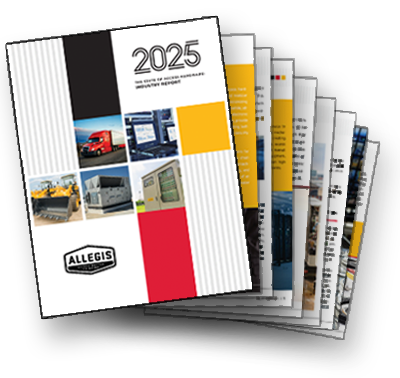

In today’s fast-changing industrial landscape, access hardware is no longer an afterthought. Once seen as a handful of latches and hinges, access hardware is now a mission-critical system impacting safety, compliance, durability, and efficiency across industries—from HVAC and telecom to heavy truck and construction.
To help manufacturers, engineers, and operations leaders stay ahead, Allegis has released The State of Access Hardware 2025—a full-length industry report that dives deep into the strategic, technical, and environmental trends shaping the future of access hardware.
This blog previews six key trends featured in the report and explores why access hardware is now one of the most important choices product teams can make.
 |
Download the Full Report Here |
1. From Parts to Systems: A Strategic Shift
Forget treating access hardware as a commodity. Manufacturers are moving toward a systems-based approach, where every hinge, latch, and seal is engineered to complement one another. This shift is reducing maintenance, increasing uptime, and improving performance across industries.
-
-
- Did you know? A poorly fitted latch can degrade the performance of an entire enclosure, risking both safety and compliance.
-
2. Smart Technology Takes the Lead
Electronic access systems—like RFID, Bluetooth, and biometric locks—are now commonplace. They’re delivering not just security, but also data insights, access control, and predictive maintenance capabilities.
Whether you're in data centers, energy infrastructure, or transportation, the ability to track access and manage it remotely is a game-changer for security and compliance.
3. Durability in Harsh Conditions
2025 brings a renewed focus on durable materials and weather-resistant designs. Think reinforced alloys, corrosion-resistant finishes, and climate-effective zinc—engineered to perform in high-stress, high-temperature, or corrosive environments.
This matters in industries like construction, military, and marine, where equipment reliability is non-negotiable.
4. Sustainability Drives Innovation
Access hardware is joining the sustainability movement. Expect more eco-friendly materials, modular components, and extended product lifecycles. Leading manufacturers are using renewable energy to produce zinc with a 43% lower carbon footprint—without sacrificing strength or function.

Modular systems also mean fewer complete replacements, less landfill waste, and easier maintenance. It's a win for your bottom line and the planet.
5. Customization is King
Off-the-shelf hardware is out. In 2025, manufacturers demand application-specific solutions—whether it's a handle that works with gloves, a lock that resists saltwater corrosion, or a hinge that’s built for high-vibration environments.
Customization now includes:
-
-
- Specialized coatings
- Ergonomic designs
- Enhanced safety mechanisms
- Seamless integration with your system design
-
6. Safety and Compliance as Non-Negotiables
With stricter industry regulations, your access hardware is more than a feature—it’s a compliance tool. From NEMA-rated enclosures to electronic lockout systems, access hardware now plays a direct role in meeting safety standards.
In telecom, utilities, and defense, access hardware ensures only the right people access the right equipment—protecting assets, operators, and reputations.
Allegis: A Systems-Based Partner for Access Hardware
At Allegis, we don’t just sell access components—we build integrated access hardware systems designed to improve the performance, safety, and reliability of the products you manufacture. Whether it’s a smart lock for a secured enclosure or a rugged handle for a field-deployed unit, our goal is simple: make your products work better, longer, and smarter.
Download the Full Report
The State of Access Hardware 2025 covers:
-
- 10+ trends and innovations
- Industry-specific recommendations
- Sustainability benchmarks
- Strategic advice for engineers and manufacturers
 |
Download your free copy now and stay ahead of the curve. |








